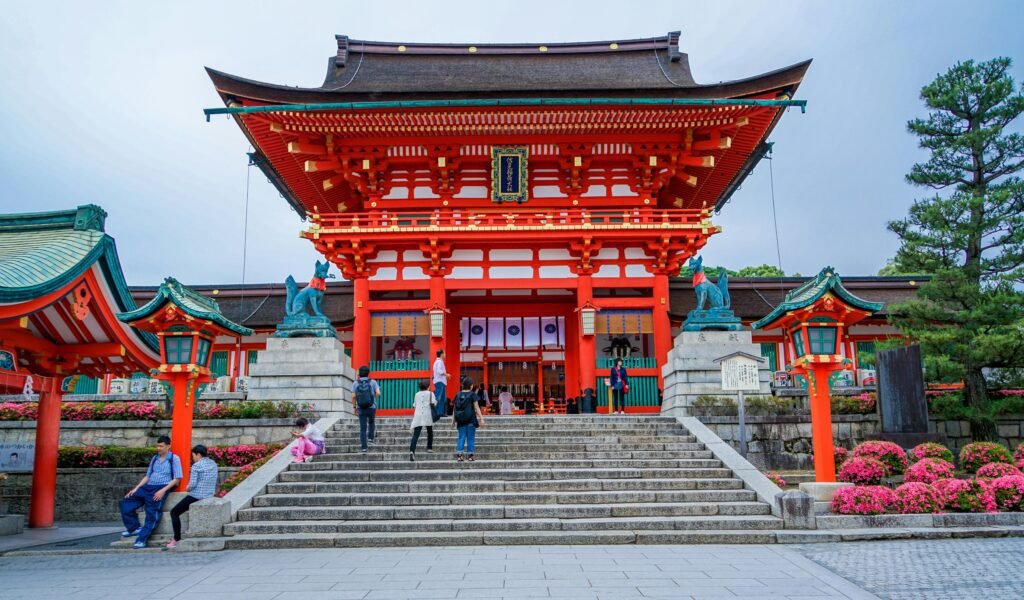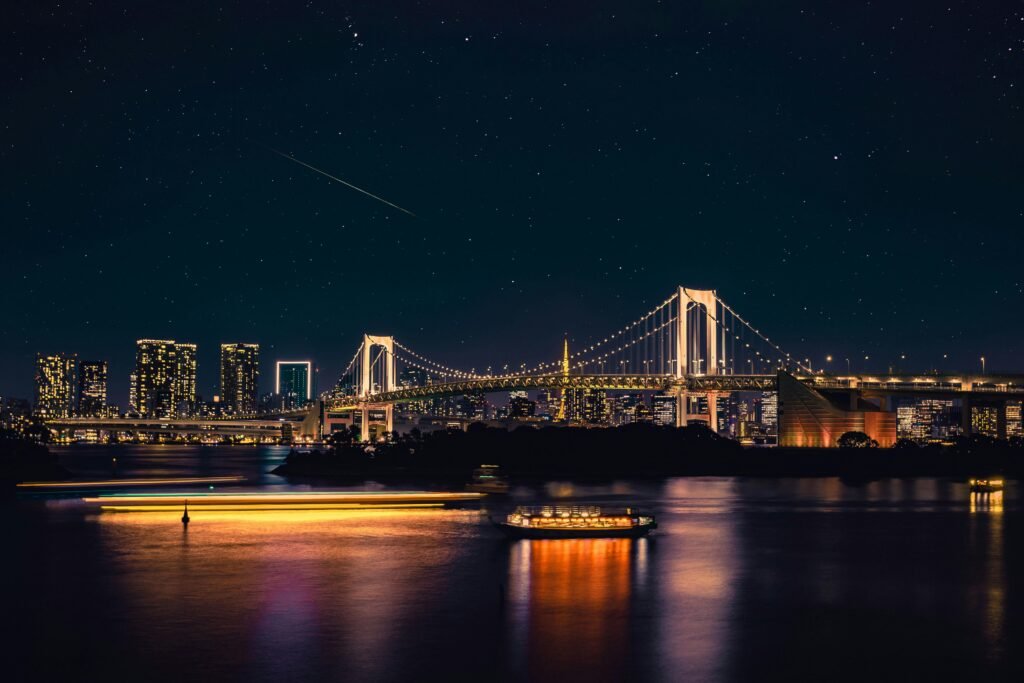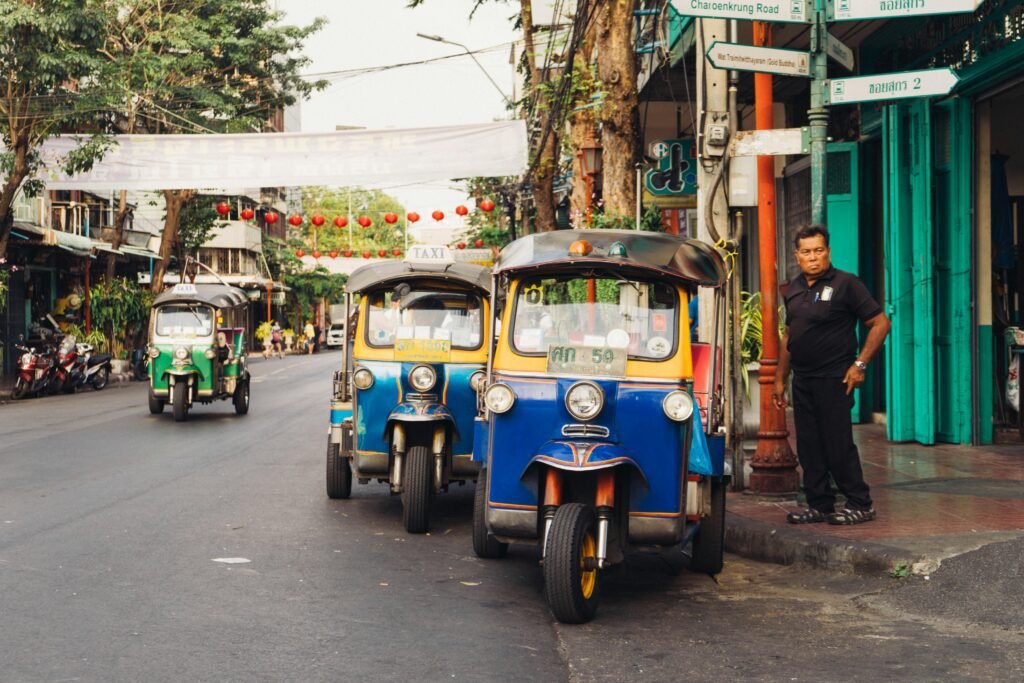
Kyoto is where centuries-old temples sit comfortably beside third-wave coffee bars; where lantern-lit alleyways give way to bamboo forests; where festivals that began a millennium ago still stop traffic every July. Whether you’re planning a once-in-a-lifetime trip or a return visit to dig deeper, this guide brings together everything you need: crisp background, the unmissable highlights, practical on-the-ground advice, and three flexible itineraries tailored to families, couples and solo travellers. You’ll also find ways to use Kyoto as a springboard for future adventures, including parallels with heritage-rich UK cities and Japanese gardens you can visit closer to home.
Kyoto at a Glance
Why Kyoto matters: For over a thousand years (794–1868), Kyoto was Japan’s imperial capital. That era left an extraordinary cultural legacy: temple architecture and Zen gardens, seasonal tea ceremonies, traditional arts performed by geiko (Kyoto’s geisha) and maiko (apprentices), and craft traditions, textiles, lacquer, and ceramics that still shape the city’s identity today. Parts of this heritage are protected within the UNESCO listing “Historic Monuments of Ancient Kyoto”, which spans Kyoto city and neighbouring Uji and Ōtsu.
Where Kyoto is: In the Kansai region, roughly 2.5 hours west of Tokyo by bullet train. It’s compact enough to cross by subway in minutes, yet its districts from riverside Gion to mountain-rimmed Arashiyama each feel distinct.
What Kyoto feels like: Seasonal. Spring sakura and autumn foliage are headline-grabbers, but winter’s clear air and summer’s festival energy are equally atmospheric. It’s also walkable: expect stone lanes, shrine-lined stairways, small bakeries, and street-corner vending machines that somehow always know when you need a cold green tea.
The Big-Hit Highlights (and How to Do Them Well)
Fushimi Inari Taisha (Vermilion Torii Tunnels)
The mountain shrine with thousands of gates is open day and night and free to enter. Go at first light or after dusk for quieter paths and gently lit torii; mid-morning can be shoulder-to-shoulder at the lower tunnels. Families with little legs can turn back at the Yotsutsuji viewpoint (about 30–45 minutes up) for city views; hardy hikers can complete the full loop in 2–3 hours. Pack water.
Good to pair with: Sake tasting and canal strolls in nearby Fushimi, Japan’s historic brewing district, or an afternoon at Tofuku-ji for photogenic Zen gardens and (in season) maples.
Kiyomizu-dera (Views from a Wooden Stage)
Clinging to a hillside above the old Higashiyama district, Kiyomizu-dera opens early and hosts spectacular special evening illuminations in spring and autumn. The wooden terrace is busy, but the grounds spread wide; take quieter side paths to Jishu-jinja and the pagodas below. Approach or depart via Sannen-zaka and Ninen-zaka for preserved townscapes (watch your step on the flagstones).
Good to pair with: Yasaka Pagoda and the pottery, teahouses and sweetshops of Higashiyama; Maruyama Park for cherry-blossom picnics.
Arashiyama (Bamboo Grove + River Country)
The bamboo path is free and always open; its hush is best savoured at dawn. Beyond the grove, Arashiyama rewards lingering: Tenryu-ji’s strolling garden, the Katsura River’s boats, that famous view from Togetsukyo Bridge, and the hillside Iwatayama Monkey Park (a steep but short climb; keep a respectful distance from the macaques). Consider arriving by the nostalgic Randen tram for a low-stress, scenery-soaked approach.
Good to pair with: Okochi-Sansō Villa for garden artistry; Saga-Toriimoto’s thatched merchant houses.
Kinkaku-ji (Golden Pavilion)
Sheened in gold leaf, reflected in its mirror pond, Kinkaku-ji looks precisely like the postcard. The garden path is one-way; arrive near opening time to avoid the coach-tour crunch. Combine with the Zen rock-garden masterpiece Ryōan-ji and the quieter mossy precincts of Ninna-ji on the same side of town.
Nijo Castle
Shogunal pomp meets nightingale, creaking floorboards at this UNESCO-listed castle. The painted sliding screens of Ninomaru-goten Palace are a Kyoto essential, and the gardens are lovely year-round. Opening times can vary slightly; check before you go and aim for 1.5–2 hours to wander at an easy pace.
Gion and the Tea-House Districts (Read This Before You Go)
Gion’s lantern-lit lanes, especially Hanamikoji Street and the narrow side alleys, are catnip for photographers. But parts of the area are private property, and in recent years Kyoto has tightened rules: don’t enter signed private alleys, don’t touch a kimono or block the path, and avoid unsolicited close-ups of geiko/maiko. Stick to main thoroughfares, be quiet after dark, and you’ll find the grace of the district reveals itself.
Good to pair with: A tea ceremony, kagai (dance) performances in spring, or a riverside stroll along the Kamo River at sunset.
Practical Kyoto: Getting In, Around and Oriented
Getting There
- By air: Fly into Kansai International (KIX) for the most direct access to Kyoto; the Haruka Limited Express train runs straight to Kyoto Station in roughly 75–80 minutes. Osaka’s Itami (ITM) handles domestic flights; from there, airport buses also run to Kyoto Station.
- By rail: From Tokyo, the Tokaido Shinkansen reaches Kyoto in ~2 hours 15 minutes (Nozomi) or ~2 hours 40 minutes (Hikari). If you’re rail-pass holders, plan for Hikari or Kodama services.
Moving Around the City
- IC cards: Tap-in/tap-out IC cards (ICOCA in Kansai; Suica/PASMO also now widely available again) make public transport painless and are accepted on most trains, subways and buses.
- Buses vs rails: Kyoto discontinued its standalone Bus One-Day Pass to ease congestion; the more useful option now is the Subway & Bus One-Day Pass, which nudges visitors onto fast east-west subway lines and key bus routes. You’ll still ride buses in temple districts, but rail + short walks often beat slow traffic.
- Good lines to know:
- Randen (Keifuku) trams for Arashiyama and north-west temples.
- Keihan Line runs north–south along the Kamo River (handy for Fushimi Inari and Gion).
- Eizan Railway takes you into Kyoto’s northern hills (Kurama and Kibune) for cedar forests, river dining in summer, and maple-tunnel views in autumn.
- Taxis & walking: Taxis are reliable and fair-metered; drivers rarely speak much English, but GPS addresses work fine. Kyoto is very walkable, just budget time; maps can deceive in hilly districts.
Tickets, Reservations and Rules Worth Knowing
- Imperial Villas: Katsura and Shugakuin Imperial Villas require advance application for guided tours (limited capacity). Same-day slots sometimes open, but book ahead where possible.
- Saihō-ji (Moss Temple): Long-limited entry with reservations required; visits include a brief sutra-copying experience before you wander the moss garden.
- Temple hours: Most temples and gardens open around 8:30–9:00 and close about 16:30–17:00; some, like Kiyomizu-dera, open at 6:00 and host seasonal night illuminations. Shrines such as Fushimi Inari are open 24/7.
- Photography etiquette: Follow posted rules. Many interiors (and parts of Gion’s private alleys) prohibit photography. Never block paths or touch the kimono; if in doubt, put the camera down and enjoy the moment.
Accessibility & Family-Friendliness
- Accessibility: Stepped approaches are common. Major sites are improving access (ramps, accessible loos), but check site maps in advance. Buses often kneel for wheelchairs and prams.
- With kids: Mix big-ticket sights with tactile stops (wagashi sweet-making classes, ninja/kimono dress-up, monkey park), and stick to two or three anchors per day with park or café breaks. Many machiya cafes have high chairs; convenience stores are your snack-time ally.
When to Visit: Seasons, Weather, Festivals
- Spring (late March–early April): Cherry blossom season fills parks and temple gardens with picnickers; expect queues and book stays early. Shoulder days just before or after peak can still be magical.
- Summer (June–August): Humid, with a rainy spell in June/early July. Gion Matsuri runs the whole of July with glorious float parades on the 17th and 24th; evening street parties (yoiyama) in the nights prior are a Kyoto rite of passage.
- Autumn (mid-Nov–early Dec): Fiery maples at Tōfuku-ji, Eikan-dō, Kōdai-ji and more; many temples hold special night illuminations.
- Winter (Dec–Feb): Clear days, fewer crowds, occasional dustings of snow that make Kinkaku-ji and Arashiyama sparkle. Warm up with yuba (tofu skin) hotpots and matcha.
Other signature events include Aoi Matsuri (15 May) and Jidai Matsuri (22 October). Schedules can shift year to year; confirm specifics before you travel.
Deeper Cuts: Beyond the Greatest Hits
- Uji (Green Tea & Byōdō-in): A half-day south of Kyoto pairs tea tastings with a visit to the Phoenix Hall, one of Japan’s most graceful temple buildings.
- Kurama & Kibune: Take the Eizan line into cedar-scented hills for Kurama-dera temple and riverside platforms (kawadoko) in summer at Kifune Shrine.
- Philosopher’s Path: A canal-side amble linking Ginkaku-ji to Nanzen-ji; cherry blossom season is peak pretty, but early morning, any time of year delivers peace.
- Markets & makers: Nishiki Market is Kyoto’s larder—arrive early before tour groups. Look for artisanal lacquerware, hand-dyed textiles and tea utensils: items that pack light and last a lifetime.
Suggested Itineraries
1) Kyoto-in-a-Day: The Essential Loop (about 14–16 km on foot/rail)
Morning
- Fushimi Inari Taisha at dawn (1.5–2 hours). Climb to Yotsutsuji for views; descend via quieter paths.
- Train to Tofuku-ji (30–45 mins visit) for Zen gardens.
Late Morning / Lunch
- Subway to Nijo Castle (90 minutes).
- Lunch nearby (udon or a bento in the castle gardens if the weather is fine).
Afternoon
- Bus or taxi to Kinkaku-ji (45–60 minutes).
- Optional detour to Ryōan-ji (40 minutes).
Late Afternoon / Evening
- Head to Kiyomizu-dera (allow 90 minutes). If seasonal night illumination is on, stay after sunset.
- Stroll Sannen-zaka/Ninen-zaka; continue to Gion via Yasaka Shrine.
- Dinner in Ponto-chō (riverside alley) or modern Japanese near Kawaramachi.
Why it works: You tick off torii, castles, gold pavilions and city views in one neatly sequenced day that favours rails over crowded cross-town buses.
2) Classic Three-Day Kyoto (balanced for first-timers)
Day 1 – East Kyoto & Gion
- Kiyomizu-dera early; wander Higashiyama lanes.
- Nanzen-ji’s aqueduct and gardens; walk the Philosopher’s Path to Ginkaku-ji.
- Tea ceremony experience mid-afternoon.
- Evening: Gion (main streets only) and Ponto-chō dinner.
Day 2 – Arashiyama & the Northwest
- Bamboo Grove at first light; Tenryu-ji garden.
- Choose two: Okochi Sansō, Iwatayama Monkey Park, river boat.
- Tram or taxi to Kinkaku-ji, then Ryōan-ji rock garden; sunset on the Kamo River.
Day 3 – Castles, Crafts & Tea
- Nijo Castle; nearby Kyoto Imperial Palace Park for open green space.
- Afternoon in Nishiki Market and the artisans’ streets around Teramachi/Shinkyogoku arcades.
- Late tram to Kitano Tenmangū (if flea market day—25th monthly) or head south for Fushimi sake breweries.
Family tweak: Swap a temple or two for a wagashi (sweet) workshop or manga museum stop.
Couples’ twist: Book a kaiseki dinner and a private garden tour.
Solo add-on: E-bike up the Kamo River paths; café-hop in Sakyo-ku.
3) Side-Trip Loop (2–3 Days from Kyoto)
If you’ve got extra time:
- Nara (great for families): Tōdai-ji’s giant Buddha and friendly deer; easy day trip by JR or Kintetsu.
- Uji (foodie couples): Tea tastings and Byōdō-in Phoenix Hall.
- Kurama & Kibune (solo hikers): Temple-to-shrine forest trail with an option to soak in Kurama onsen.
Where to Eat (and What to Order)
- Nishiki Market & around: Try yuba (tofu skin), fresh mochi, sesame skewers and grilled river fish in season. Great for grazers; arrive before 10:00 to avoid shoulder-to-shoulder aisles.
- Ponto-chō & Kiyamachi: Atmosphere-rich alleys by the river with everything from smoky yakitori to refined kaiseki; book ahead for river-deck dining (kawayuka) in summer.
- Higashiyama/Arashiyama cafés: Slow down with matcha parfaits, kakigori (shaved ice) in summer, and kissaten (retro coffee shops).
- Vegetarian/vegan: Look for shōjin-ryōri (Buddhist cuisine) near temple districts; tofu specialists are plentiful (especially around Arashiyama and north of the river).
- With kids: Noodle bars and conveyor-belt sushi keep it fun and fast; convenience stores are brilliant for on-the-go fruit, milk, onigiri and emergency umbrellas.
Tip: Many small restaurants are cash-preferred. Carry a little; ATMs at 7-Eleven and the post office accept foreign cards.
Where to Stay: Best Areas (and Styles) for Every Traveller
- Kyoto Station (super practical): Perfect for rail-based day trips and airport trains. Big hotels, easy luggage forwarding, and lots of food options inside the station complex. Good for families who value logistics.
- Downtown Kawaramachi/Karasuma (walkable & lively): Central for shops, bars and late-night snacks; easy subway access in both directions. Boutique hotels and modern ryokan are common here.
- Gion/Higashiyama (character & quiet lanes): Machiya townhouses and small inns tuck into atmospheric streets, romantic for couples. Be respectful of neighbours and check access if you have mobility needs.
- Arashiyama (green retreat): Garden ryokan, river views and early access to the bamboo path; further from nightlife but wonderful for a slower rhythm.
Budget–mid–boutique spectrum:
- Budget: Hostels and capsule-style stays cluster near Kyoto Station and downtown; many offer family rooms.
- Mid-range: Business hotels with compact, spotless rooms and on-site laundries; boutique hotels with breakfasts showcasing Kyoto produce.
- Boutique/luxury: Intimate ryokan with kaiseki, townhouses restored with cedar and washi, riverside retreats in Arashiyama.
Special Experiences & Seasonal Magic
- Temple night illuminations: Rotating line-ups in spring and autumn (Kiyomizu-dera, Eikan-dō, Kōdai-ji, and more) transform gardens with lanterns and projection-mapping.
- Gion Matsuri (July): Watch master carpenters lash together 25-metre floats, then see them glide through town on the 17th and 24th. Evening “yoiyama” nights bring music, yukata and street food.
- Tea ceremony & crafts: Join small-group tea, indigo dyeing, fan-painting or calligraphy sessions; many welcome children.
- Riverside summer dining: Platforms over the Kamo and Kibune rivers help beat the heat – book ahead.
- Onsen & wellness: Slip out to Kurama for rustic hot springs after a hillside temple day; or opt for a modern sentō bath in town.
Photography Tips (That Also Keep You Respectful)
- Early light is everything: Bamboo Grove, Fushimi Inari and the Philosopher’s Path are most photogenic before 8:00.
- Telephoto lenses are better than your feet in Gion – keep your distance.
- Interiors often ban tripods and flashes; heed signage.
- Pack a fast, small prime and a light rain cover: showers can be sudden, and reflections on stone lanes after rain are beautiful.
Safety, Comfort & Common Sense
- Heat & humidity: Japan’s summers are steamy. Hydrate, take AC breaks in convenience stores and museums, and mind heat-stroke alerts.
- Typhoons & rain: June to early July is “tsuyu” (rainy season); late-summer typhoons can disrupt travel – keep an eye on forecasts.
- Cash & cards: Contactless is improving fast, but small shrines and eateries may be cash-only.
- Hands-free sightseeing: Luggage forwarding (takkyūbin) is ubiquitous – send big bags between airports and hotels so you can enjoy Kyoto unburdened.
Kyoto as a Springboard: UK Tie-ins and Future Trip Ideas
If Kyoto’s blend of heritage, gardens and walkability resonates, you’ll find kindred spirits in parts of the UK. Think of Bath and York for layered history, Oxford for cloisters and colleges, Edinburgh for medieval lanes and a dramatic castle. Prefer a Japanese aesthetic closer to home? Seek out London’s Kyoto Garden in Holland Park, the serene Japanese Garden at Cowden in Scotland, or the Japanese landscapes within Tatton Park and Birmingham Botanical Gardens for a contemplative afternoon.
On your next Japan trip, resonate with Kyoto’s themes elsewhere:
- Kanazawa for garden artistry (Kenroku-en) and samurai quarters.
- Nara for temple grandeur and deer-dotted parks.
- Kōyasan for temple-stay nights under star-deep skies.
- Himeji for Japan’s finest original castle—an easy day trip by rail.
Quick-Reference: Logistics Cheat Sheet
- Air & Rail into Kyoto: KIX → Haruka Limited Express → Kyoto Station (~75–80 minutes). Tokyo → Shinkansen (2–3 hours).
- Local Transport: Get an IC card (ICOCA/Suica). Prefer rail + walking; use the Subway & Bus 1-Day Pass if you’ll criss-cross.
- Reservations Worth Making: Katsura/Shugakuin Imperial Villas; Saihō-ji (Moss Temple); kaiseki dinners; tea ceremonies; summer river platforms.
- Peak Seasons: Late March–early April (sakura); mid-November–early December (foliage). July (Gion Matsuri).
- Etiquette Headlines: No photos where prohibited; no entry to private alleys in Gion; be quiet in residential lanes; queue neatly; shoes off where signed.
Final Thought
Kyoto truly comes alive when you slow down. While it’s good to plan your main attractions, the city’s real charm lies in its quiet moments: a peaceful walk through a rain-soaked moss garden, a coffee in a hidden cafe, or the silent beauty of a sub-temple you find by chance. These small, authentic discoveries are where Kyoto’s magic is best found, whether you’re travelling alone, as a couple, or with family.

